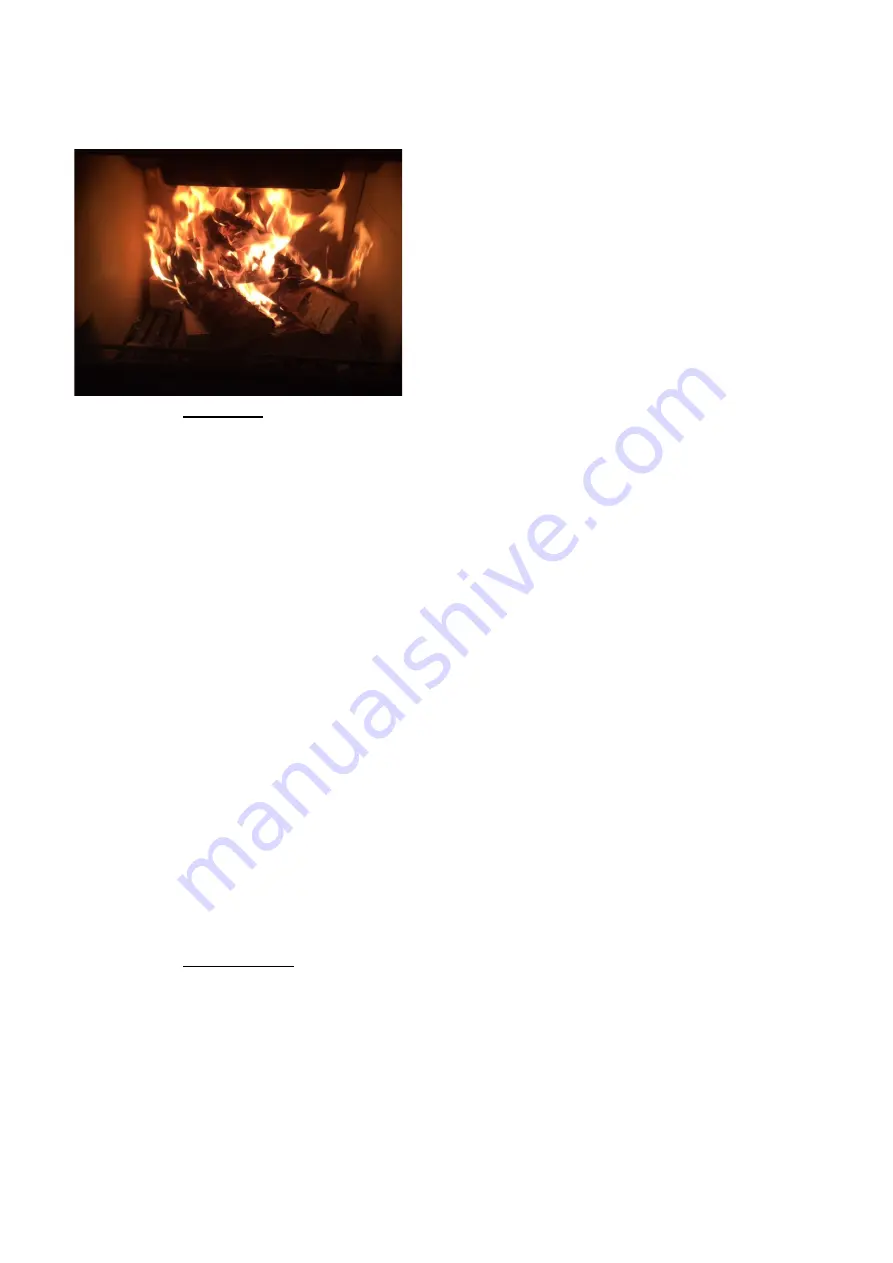
19
Purevision LPV Freestanding
Issue 01 02/21
Allow the fuel to reach a steady burn and sometimes the initial fuel can be left to burn down to
charcoal without much further attention. Build the fire up carefully by adding a couple of small split
logs at a time. Do not overload the fire bed with a very big log or more than two logs at a time.
Once you have a good fire bed established across the
firebox, further fuel can be added step by step as
required. Don’t be tempted to overload the f
ire bed
with fuel all at once or close down the air controls
until the fire is really well established for some time.
Once the ignition period is well under way, close the
active baffle operating rod by re-fitting the end
section of the rod. Gradually reduce the air control
opening to establish the burning intensity you
require.
7.9
Re-fuelling
The fire will begin to die down with a significant amount of white ash showing amongst the fuel - the
fire will die down as the fuel is consumed. When the flames disappear and the remainder is breaking
down into glowing embers it is an appropriate time to consider re-fuelling. NOTE: If the flames
disappear and there are still lumps of solid wood left this indicates excessive internal moisture in the
wood or insufficient air supply or flue draught
–
use drier logs, more than one log at a time or adapt
the burning technique to burn hotter.
NOTE:
To eliminate unwanted smoke emission, after loading new logs on to the fire, open the air
wash control up fully for 3 minutes or until the logs are blackened all over to boost the fire and get
flames issuing from the top of the fuel as soon as possible. When flames are well established, reduce
the air wash to the running setting required.
Burning without flames above the fuel will create
unnecessary smoke
. Do not load fuel above the tertiary air inlet hole profiling at the back of the
firebox.
Loading 1 or 2 large sized logs at a time weighing 1-2kg DRY will produce a good output with
reasonable burn time. Small logs will burn up quickly producing a high output and more emissions
for a short time, and a large log will take longer to burn and produce less output and less emissions
over a given time unless it will not burn with flames above it. These appliances are approved for
intermittent operation on wood (0.75 to 1.5 hour burn cycles) although longer burn times can be
achieved by fully loading the firebox, getting the fuel burning well and then shutting the air control
right down (see below). The fire will then need reviving by first opening the air controls and then
using small pieces of wood and plenty of air to get flames issuing from the wood again. Never load
fuel above the rear firebox tertiary air profiling or allow it to spill onto the glass.
7.10
Shutting Down
The stove will normally shut down by itself as the fuel is consumed so there is no need to close the
air control towards the end of the burn. In order to shut down the stove for other reasons, close the
single air control to the central position. If the control is left in this position, the fire will eventually
go out but it will also cause the glass to blacken. If you want to revive the fire it is recommended
that the air control is opened fully initially.
Warning! -
The stove will remain
very hot
for a considerable time after the fire has died down or
been extinguished.















































